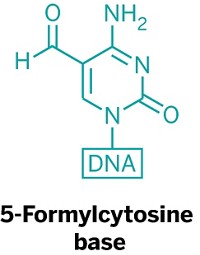Advertisement
Grab your lab coat. Let's get started
Welcome!
Welcome!
Create an account below to get 6 C&EN articles per month, receive newsletters and more - all free.
It seems this is your first time logging in online. Please enter the following information to continue.
As an ACS member you automatically get access to this site. All we need is few more details to create your reading experience.
Not you? Sign in with a different account.
Not you? Sign in with a different account.
ERROR 1
ERROR 1
ERROR 2
ERROR 2
ERROR 2
ERROR 2
ERROR 2
Password and Confirm password must match.
If you have an ACS member number, please enter it here so we can link this account to your membership. (optional)
ERROR 2
ACS values your privacy. By submitting your information, you are gaining access to C&EN and subscribing to our weekly newsletter. We use the information you provide to make your reading experience better, and we will never sell your data to third party members.
Biological Chemistry
Tracking a tricky chemical protein modification
Serine residues on histone proteins are decorated with adenosine diphosphate ribose tags in response to DNA damage
by Sarah Everts
October 17, 2016
| A version of this story appeared in
Volume 94, Issue 41
A common strategy organisms have for controlling biological processes in a cell is to decorate important proteins with a chemical tag, such as a phosphate, methyl, or acetyl group. One of the most complex and fragile of these so-called posttranslational modifications is known as adenosine diphosphate ribosylation, or ADPr. This modification is used by many pathogens, including the causative agent of cholera, which uses ADPr to orchestrate lysis of intestinal cells. In mammals, the tag is involved in DNA repair, and malfunctions in ADPr decoration can lead to cancer. Despite ADPr’s importance, researchers know little about its precise molecular mechanisms or the specific amino acids ADPr decorates. To remedy this situation, a team led by Ivan Matic of the Max Planck Institute for Biology of Ageing has developed a mass spectrometry technique to identify and quantify ADPr in cells (Nat. Chem. Biol. 2016, DOI: 10.1038/nchembio.2180). The method reveals that histone proteins are tagged with ADPr on serine residues in response to DNA damage. “This work provides both a new direction of inquiry into the role of ADPr in cellular function and a new tool with which to explore it,” the researchers note.




Join the conversation
Contact the reporter
Submit a Letter to the Editor for publication
Engage with us on Twitter